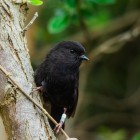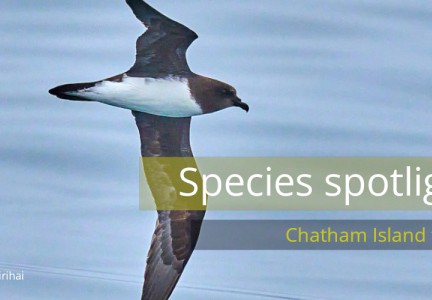
Blog and news
Species Spotlight: Chatham Island tāiko
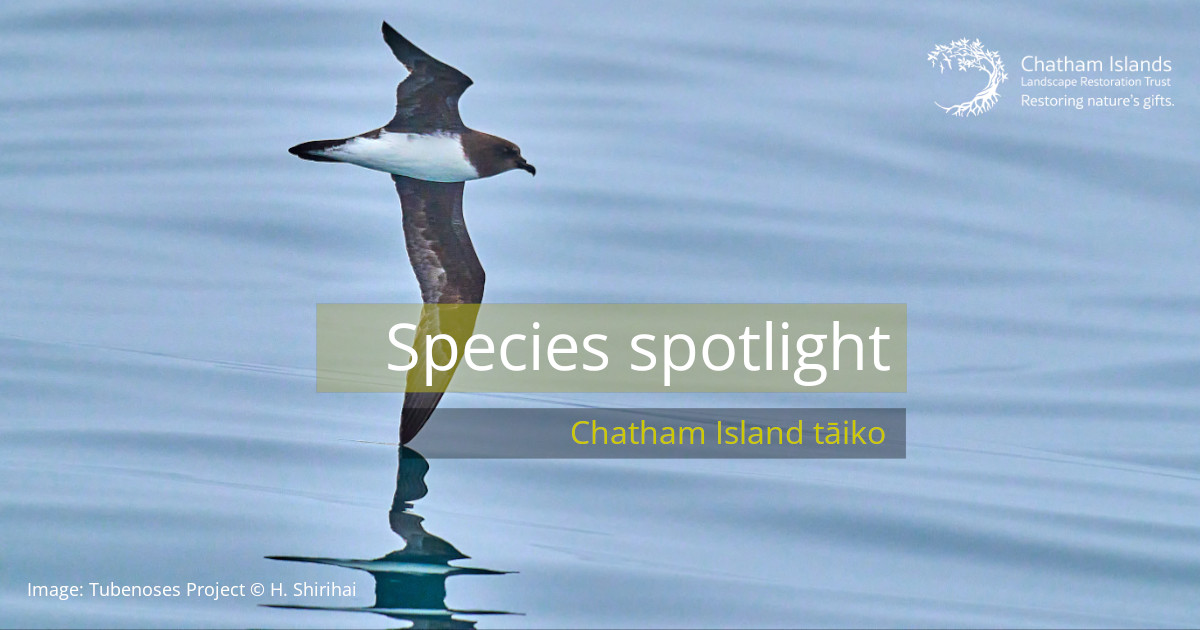
Chatham Island tāiko are a small seabird in the petrel family. They spend their days foraging at sea, come inland at night to sleep and breed in burrows deep in the forest, and they're one of the internationally acclaimed conservation successes of the Chatham Islands. We’ve fished around to bring you the top CI tāiko facts for this month's Species Spotlight.
Tāiko have gone from abundant to critically threatened.
Fossil records show the Chatham Island tāiko used to be the most abundant of burrowing birds on the Chathams, although there’s no evidence of it on any island other than Rēkohu/ Wharekauri/ main Chatham. Today, Chatham Island tāiko are critically endangered, with just 50 breeding pairs known. This makes them a contender for the undesirable title of World’s Rarest Seabird.
The decline of the CI tāiko population is linked to habitat loss and introduced species – particularly rats, cats, pigs, and even weka. CI tāiko are vulnerable to predation from cats while they’re on the forest floor. Although their 1-3 meters long burrows are too deep for cats to go inside, rats can easily sneak in and destroy eggs or kill chicks when adults are out at sea. Weka are also able to kill birds on the ground, and can go down burrows to take eggs and chicks.
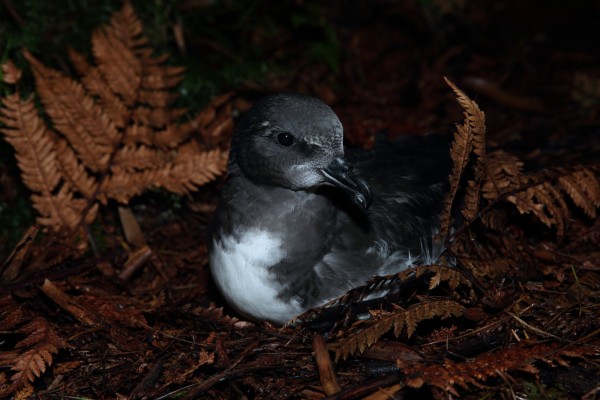
Chatham Islands tāiko in the bush Image: Dave Boyle
They have several names.
This bird is also known as the ‘magenta petrel’. The misleading name is due not to flamboyant colouring – these birds have beautiful, subtle grey and white colourings – but because the first specimen was collected by Magenta, His Italian Majesty’s ship, on July 22 in 1867. Both the English and modern Latinate names (Pterodroma magenta) come from this ship, which we bet probably wasn’t magenta either.
Its Māori name is ‘tāiko,’ and it is also known by the Moriori name ‘tchaik.’
They’re a Chatham conservation success story.
The magenta petrel was a mysterious bird, only known from the single specimen in 1867. With no further sightings over the next 100 years, it was presumed extinct. Meanwhile, the CI tāiko was also a mysterious bird known to islanders into the 1950s, but was considered by the outside world to either be another known species of petrel, or extinct. It wasn’t until the first birds were caught in 1978 that the CI tāiko was officially recognised – or ‘rediscovered’ by the scientific world – and also proved to be the long-lost magenta petrel.
The first CI tāiko burrow was found in 1987 in the dense bush of the southern end of main Chatham, which remains the only area they breed.
A massive conservation programme has been wrapped around CI tāiko. This includes a predator-proof fence built by the Chatham Island Taiko Trust to help a new colony establish. Translocations to this area since 2006, along with other methods like a mean as sound system to attract new birds, have helped boost the population. Today’s 50 known pairs is an impressive increase from the 10 known pairs in 2000. Over half of today’s couples are within the predator-proof fence at Sweetwater.
A huge number of people have been involved in protecting CI tāiko since their official rediscovery. This includes local individuals and groups, who have championed their conservation with time, land, resources and advocacy. It also includes national groups and the New Zealand government.
Today, the main groups leading CI tāiko conservation work are the Chatham Islands Taiko Trust and Wildlife International Management Ltd, who have carried out management work for the last 10 years.

Expert Dave Boyle shows Te One School kids a Chatham Islands taiko.
Their poop helps the forest grow.
When CI tāiko return from a day foraging at sea, they play a key part in the island-ocean nutrient cycle. All the fish and marine invertebrates they’ve consumed are stored as nutrients in their body, which they deposit into the forest – most obviously (and hilariously, if you go in for that sort of humour) in the form of poop. This replenishes the nutrients available to the forest to help it grow.
Many seabirds provide this important service in this nutrient cycle, but CI tāiko are unique because of where they live. Their burrows can be as far inland as 5km, which brings these nutrients right into the forest where many seabirds don’t get to. CI āiko also need to climb trees for take-off, which helps with more widely dispersing the nutrients.
Chatham Island tāiko holiday in Peru.
In winter, they set off across the Pacific Ocean and Tasman Sea to more tropical climes. Like Peru. That’s about 10,200 kms.
In fact, CI tāiko seem to spend a lot of time away from home. Juvenile CI tāiko will spend three to four years away from the Chathams (teenagers, eh) before returning to start breeding.
When the breeding birds do return in late September, they don’t spend a lot of time there till the egg-laying and the baby-raising starts. Usually the male of a pair arrives first, followed by the female a couple of days later. They might hang around for just a day cleaning the nest and mating before setting off again the next night, to return two months later.
At that point, they could arrive within an hour of each other; within 90 minutes, the female can lay her single egg and set off again for 2-3 weeks, leaving the male to incubate until she comes back and they switch roles.
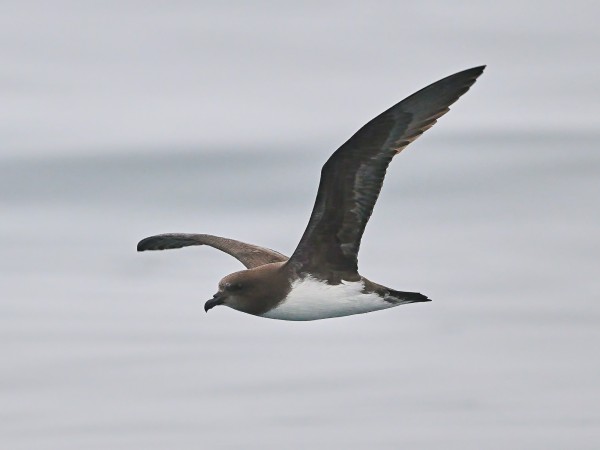
Chatham Islands tāiko in flight Image: Tubenoses Project (C) H Shirari
They have a keen sense of home.
Despite travelling as far abroad as Peru, CI tāiko don’t go ashore anywhere except home. They feed and sleep at sea their whole lives, except during the breeding season.
CI tāiko are very good at identifying their burrows, despite having to get through dense bush to get there. They can land on the forest floor and enter their burrows within 5 seconds. A tāiko chick will fledge and leave home, spend years away, then can return on a dark and stormy night to drop back through that dense, intense forest and land within a meter of their burrow.
Breeding pairs tend to return every year to breed in the same burrow, and males can spend up to three weeks camped up there, incubating an egg, without any food or water.
They take precautions, like being active at night.
Although they spend all day at sea fishing, CI tāiko are active at night in their breeding grounds. This could be an evolutionary tactic to help avoid their natural predators, like skua and gulls (and, before it became extinct, possibly Hawkin’s rail).
However, it does make them vulnerable when they come in to land or leave their burrows, so they’ve developed some other cautionary behaviours. As well as making a very swift re-entry to home, they’ll sit for up to half an hour at the entrance to their burrow to check surroundings before they exit and climb a tree to set off for the day.
Their eyes are also able to manage both the glaring tropical sun and the darkness of nighttime Chatham Island bush. Pretty impressive.
A huge thanks to tāiko expert Dave Boyle, who works for the Chatham Islands Taiko Trust, for helping us pull together this blog.
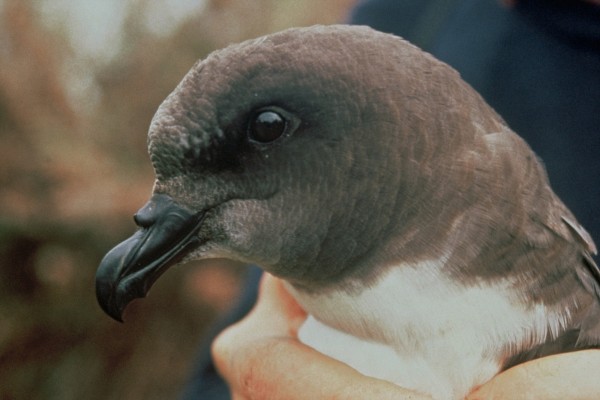
Chatham Islands tāiko,close up Image: DOC
How you can help
If you live on the Chathams, you can help by trapping predators on your property and by being a responsible cat owner. Get in touch with CILRT if you’d like more information about either.
Visit the Chatham Islands Taiko Trust to find out more about their work and how you can donate or support them directly.
You can also donate to CILRT to help us with our Predator Free Chathams programme. This long-term work focuses on removing possums, feral cats and rats from main Chatham by 2050 – creating new opportunities for CI tāiko habitat to expand, and for CI tāiko to move into new areas without the challenge of introduced predators.
Find out more about more about tāiko at NZ Birds Online, and more about Chatham seabirds on our website.

